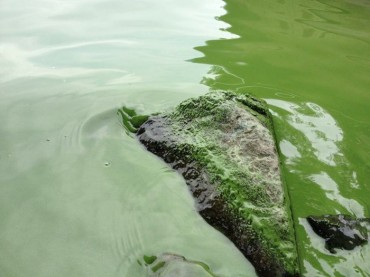
The Northern Sea Route is currently available for navigation for four months a year, but this is expected to increase to six months by 2020, and will be available all year round by 2030. (image credit: Korea Maritime Institute)
SEOUL, Korea, August 09 (Korea Bizwire) – Like on the road, sea routes are important as they ensure the safety of ships, avoiding the rocks and icebergs hidden below the surface and the ever-changing currents that can prove deadly. Recently, the Northern Sea Route passing through the Arctic is receiving a lot of attention.
Last year 46 ships traveled following the Northern Sea Passage, compared to only 69 for the 100 years between 1906 and 2006. This increase is largely due to the melting ice, with a greater number of countries and private companies seeing this trend as an opportunity. The Northern Sea Route is currently available for navigation for four months a year, but this is expected to increase to six months by 2020, and will be available all year round by 2030.
Compared to the conventional shipping route from Europe to Northeast Asia which passes the Suez Canal, the Indian Ocean, and the Pacific, the Northern Sea Route is shorter in length by 8,000 km and reduces the travel time from 24 days to 14. In addition, the Korea Maritime Institute (KMI) estimates that under optimal conditions expenses can be reduced by 10 to 20 percent.
Lee Sung-woo, director of research in international logistics at KMI, said, “The Northern Sea Route will have a great impact on reducing time and cost, which will radically stimulate trade between Europe and Asia. For countries like Korea with foreign trade-oriented economies, this type of change can prove to be an opportunity for significant economic improvement.”

The Korean government will be active, not just waiting for the Arctic ice to melt, but by seeking routes and borrowing ice-breaking oil tankers from a Swedish company and importing crude oil from Europe to test economic feasibility through the new sea lane. (image credit: Korea Maritime Institute)
The government has decided also that developing the sea passage is essential for raising competitiveness of the national shippers, and has announced a ‘comprehensive plan for the development of the Arctic.’ The government will be active, not just waiting for the Arctic ice to melt, but by seeking routes and borrowing ice-breaking oil tankers from a Swedish company and importing crude oil from Europe to test economic feasibility through the new sea lane. In order to boost scientific research activities in the Arctic the government will expand the Dasan Scientific Base in the Arctic and will consider the construction of a second ice breaker.
Policies & Law (Follow us @Policynews_Korea)






